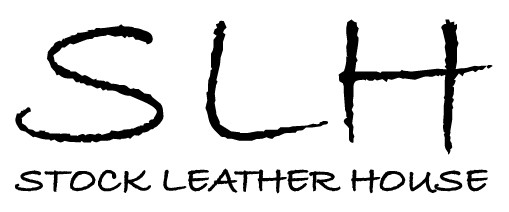Glossary
ANILINE:
colourless colourant used to give a clear finish to the leather. SUEDED: whole skin, brushed and velvety, this is the result of buffering with abrasive on the reverse side of the leather, which becomes the outside.
TANNING:
process of conversion from raw skins to grain skins or leather in a state of preservation.
CRUST:
bottom layer of the leather that is first split (one layer of one skin is tanned) and then tanned.
LEATHER:
skin tanned at full thickness.
FINISH:
operation carried out to complete and perfect the leather. Usually it refers to the application of a dye on the surface of the hide or films to protect the leather or hid imperfections.
OPAQUE FINISH:
a non-shiny finish that goes from piatto to raso.
FINISHES:
a term that covers all operations after tanning, such as embossing, dyeing, surface coats and others.
BACK SPLIT:
perforation or narrow split along the spine, usualy 6/15 inches long. This part of the back, which is found behind the neck in some cattle breeds such as Brahman, must be removed during tanning. The back split does not influence the yield or quality of the leather.
MILLING:
process with a mill inside a vat to make the leather soft to the touch and flexible.
EMBOSSING:
process in which the leather is embossed, printed with special calenders, to create a new grain on the surface. Embossed leather can present various designs, veins similar to natural ones and other patterns. Embossing is usually carried out on corrected grain leather.
GRAIN:
surface structure of the leather.
NATURAL GRAIN:
a generic term used to describe a leather with a surface left in its natural (original) state. A natural grain leather is known as full grain. The natural grain can even be embossed on the leather to imitate the original surface of the leather.
KIPSKIN:
the skin of a young cow.
SHINE:
term used to define the amount of light reflected by the leather surface. The shine can be opaque, medium, soft or shiny.
BRAND:
a permanent mark made using a hot iron, with the business name or distinctive logo, on the skins of the animals to identify ownership. These marks are visible, above all on full grain leather, less on corrected. When the brand is deposited, imitations and forgeries are forbidden by law.
NUBUK:
cattlehide that has been polished and sanded on the grain to make the surface even, velvety and soft, similar to suede.
PATINA:
natural colour present on aniline leather and nubuck through the absorption of body oils that can darken or enrich the aspect of the leather over time.
HIDE:
the tanned skin of the animal.
ANILINE LEATHER:
natural leather covered by clear aniline colourings (brush, buffer or spray dyed) that enhance knots and natural veins, imperfections that guarantee the authenticity of these skins Aniline skins are not finished with pigments.
SEMI-ANILINE LEATHER:
leather covered by a lightly pigmented tone to make the colour even without covering the natural signs of the leather itself. The protective layer helps minimise wear and improves resistant to light.
CATTLEHIDE:
hide deriving from various species of cow and ox.
CHROME-TANNED LEATHER:
skins worked with chrome salts (mineral tanning) to make the surface soft and long-lasting. Chrome-tanned leather is used mainly for coatings.
VEGETABLE-TANNED LEATHER:
skins worked with tannins through the process that transforms raw hides into leather, used above all for tack room tools and saddlery.
NATURAL LEATHER:
untanned leather.
CORRECTED GRAIN LEATHER:
skins which, after being slightly sueded to remove possible defects and natural marks, is covered with a finish that contains resins and pigments. The surface becomes even in this manner, coloured or natural. Corrected grain leather is also used for coatings.
FULL SKIN:
the whole skin of the animal that differs from the half skin and remnants.
AGED LEATHER:
skin characterised by a surface that looks aged or naturally old, thanks to a patina with warm tones. This effect is typical of pull-up leather.
NAKED LEATHER:
an aniline-dyed skin with no protective film. Naked leather is often defined as aniline leather.
FULL GRAIN LEATHER:
a type of skin that presents the grain layer intact. The grain or surface, from which the hairs have been removed, have not been altered with finishes. Full grain leather visibly presents the natural imperfections, and this is why it is considered as being of the highest quality and the most prestigious.
LEATHER FOR COVERINGS:
skin that is usually soft and coloured, used above all for covering furniture, vehicles, aeroplanes, bags and other leather creations.
SANDED LEATHER:
skins with a corrected surface grain, removed partially by sanding because the surface presents a lighter, more even grain. Sanded leather is ready for embossing and for creating corrected grain leathers.
TOP GRAIN LEATHER:
the upper cut of the kipskin (considered to be the best cut). Can be full grain, maintaining all its natural imperfections, or corrected to hide marks and other imperfections.
LEATHER FOR COVERINGS:
skin that is usually soft and coloured, used above all for covering furniture, vehicles, aeroplanes, bags and other leather creations.
PIERCED LEATHER:
leather that presents small holes cut into the hide to form a pattern.
YIELD:
the quantity of leather that can truly be used after leftovers and pieces with imperfections have been removed. Approximately 75/80% of the total skin can normally be used.
FINISH:
the final process carried out on the leather after tanning is the surface coating of the product.
NATURAL WRINKLES:
natural marks on the skins that are found around the neck and on the stomach of the animal, caused by more relaxed leather that has formed after grazing and with growth. Wrinkles are not present on corrected grain leather, and are appreciated by those who enjoy natural leather.
LEATHER REMNANTS:
a generic term used to indicate leather scraps that cannot be considered as full or half. Leather remnants can be very small pieces, or up to 3/4 the size of a whole skin.
SIDE:
half of a whole skin that is obtained from cutting the skin into two parts along the spine of the animal.
NATURAL MARKS:
these can be surface or in-depth scars, scratches, sand marks, insect bites, wrinkles, pores, brand marks, colour variations, blind grain, and others. These marks characterise the full grain leather and identify the most prestigious type of leather.
TANNINS:
tans used in vegetable tanning, they are chemical substances that are present in the vegetable extracts (above all in vascular plants).
HAND:
a term used in the industry to indicate the softness of the leather.
LEATHER FABRIC:
a general term used to indicate a product made from real leather. VAT
DYEING:
a process in which the leather is immersed into a specific dye inside a pertinent vat, allowing the colour to be fully absorbed through the pores and the fibres of the leather. TOP
COAT:
enamel, synthetic resin applied to the leather to coat the surface and make it more resistant to wear and other aggressive agents.

